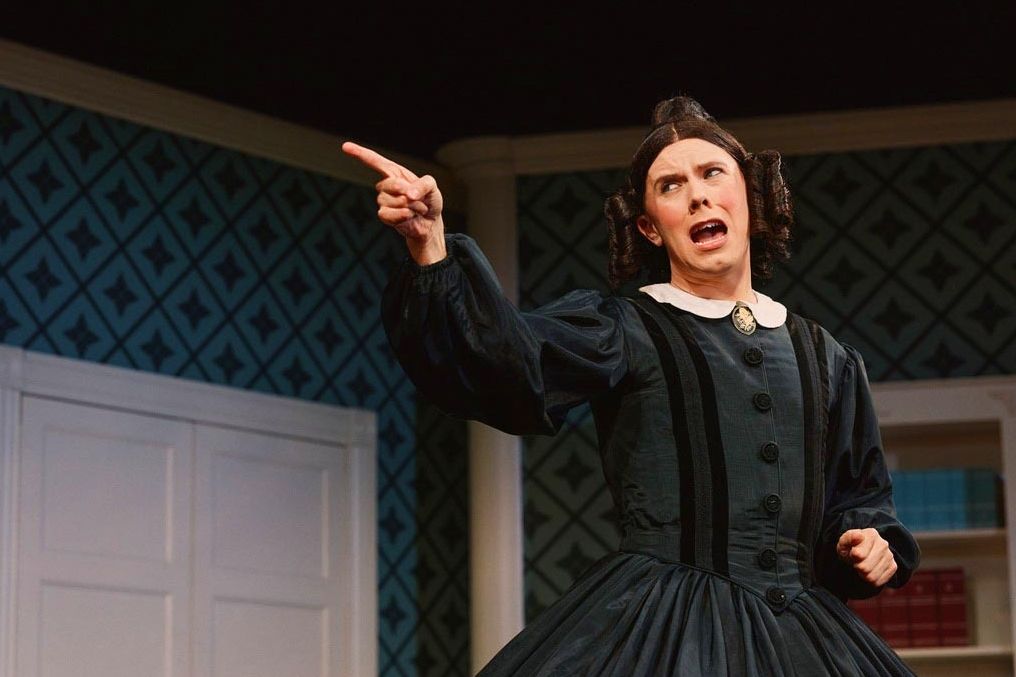Review: "War Horse" Touring Broadway Production

Photo courtesy Broadway Across America Portland.
The touring production of the Broadway show War Horse is a marvel of puppetry and technical production. The horses shiver, twitch, and breathe; the swallows swoop; the crows bristle. The staging, too, is an exceptionally imaginative cross of minimalist props and set with high tech sound and lighting design.
Unfortunately, the puppets have more personality, texture, and soul than most of the human characters, to say nothing of the lackluster script. Although the show tickles the visual pleasure center of the brain, it barely ventures into the heart.
Based on Michael Morpurgo’s children’s novel, the story is well known thanks to Steven Spielberg’s movie adaptation. A boy, Albert Narracott (Alex Morf), falls in love with the family’s new foal, Joey. He painstakingly raises his friend, teaching him to plow against his heritage as a riding horse, only to have his father sell the horse to the British Army when England is pulled into World War I. Heartbroken, 16-year-old Albert lies about his age and enlists in the army, tracking Joey across France’s Western Front. Meanwhile, Joey undergoes major war trauma, traveling back and forth across the bomb-addled no man’s land (no horse’s land?), alternately claimed by one side and then the other as each of his owners is summarily shot or blown up.
War Horse
Broadway Across America Keller Auditorium
Feb 26–Mar 3
Morpurgo famously said, “they must be mad,” to want to make a play from his story, given its epic geographic scope and equine requirements. But not only did the National Theatre of Great Britain do it, they succeeded with such artistry that the Broadway version won five Tonys, including Best Play. And the production is sheer art in many ways. The horses, designed by South Africa’s Handspring Puppet Company, require three puppeteers to breathe life into the wicker and cloth contraptions, which are hardy enough to carry a rider, and the other puppets, from a goose to carrion birds, add comic relief and horror in equal parts. The lighting and set design use strong, seizure-inducing white lights and beautiful pencil-sketch animation on a giant screen that looks like it’s heavy paper torn from a sketchpad to create a lush world on an otherwise bare stage.
The audio-visual result is stunning moments that feel drawn from a Frank Miller (Sin City, 300) comic book: vivid action scenes in stark whites, blacks, and reds with chest-palpitating sound effects and intricate choreography (some in questionable slow-motion). The big war scenes in particular feel more like a dance production than a theatrical one.
Unfortunately, the bright lights only further illuminate the play’s theatrical shortcomings. The performances are almost across-the-board stiff and overdone. Morf’s Albert is an over-the-top, saccharine, and robotic portrayal of boyhood (he just took the lead on February 26, so hopefully he’ll mellow). And no offense to the follicularly impaired among us, but a man with a significantly receding hairline should never be cast to play a 12- and 16-year-old boy.
The plot and the script by Nick Stafford, with a tendency for the obvious and the cliché, also fall far short of a winning finish. Particularly in regards to Joey’s monomaniacal love for his horse, I had to continually remind myself that the play’s based on a children’s story.
Ironically, although dwelling on the beauty of the relationship between man and beast (and an especially poetic German officer also falls for Joey), the play is thoroughly unsentimental about the lives of its humans, casually killing most soldiers in sight. Signaling that Morpurgo/Stafford is aware of this fact, one German officer even criticizes the poetic German for putting the life of his horse before that of his soldiers, shortly before both are blown to smithereens.
I can certainly see the potential for a stunning, moving piece of theater if there were steady hands holding the reins, knowing when to pull back before the steed runs itself into the ground. But directors Nicholas Hytner and Nick Starr snap their whip, pushing everything to excess like they’re overcompensating for the story’s shortcomings. The sad result is they strip the emotional valency from the story. It’s hard to feel any emotion when the audience is under constant barrage from the stadium light and sound show. The tears should’ve been flowing freely at the final scene, but instead I was groaning at the utterly over the top cliché.




